Scientometric trends for coronaviruses and other emerging viral infections
- PMID: 32803225
- PMCID: PMC7429184
- DOI: 10.1093/gigascience/giaa085
Scientometric trends for coronaviruses and other emerging viral infections
Abstract
Background: COVID-19 is the most rapidly expanding coronavirus outbreak in the past 2 decades. To provide a swift response to a novel outbreak, prior knowledge from similar outbreaks is essential.
Results: Here, we study the volume of research conducted on previous coronavirus outbreaks, specifically SARS and MERS, relative to other infectious diseases by analyzing >35 million articles from the past 20 years. Our results demonstrate that previous coronavirus outbreaks have been understudied compared with other viruses. We also show that the research volume of emerging infectious diseases is very high after an outbreak and decreases drastically upon the containment of the disease. This can yield inadequate research and limited investment in gaining a full understanding of novel coronavirus management and prevention.
Conclusions: Independent of the outcome of the current COVID-19 outbreak, we believe that measures should be taken to encourage sustained research in the field.
Keywords: SARS; coronavirus; emerging viruses; epidemics.
© The Author(s) 2020. Published by Oxford University Press.
Conflict of interest statement
The authors declare that they have no competing interests.
Figures

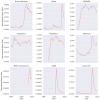
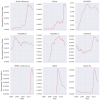

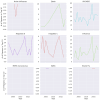
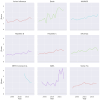




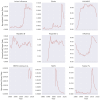
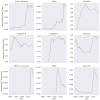
Similar articles
-
Has Covid-19 Gone Viral? An Overview of Research by Subject Area.Health Educ Behav. 2020 Dec;47(6):861-869. doi: 10.1177/1090198120958368. Epub 2020 Sep 4. Health Educ Behav. 2020. PMID: 32886013
-
Coronavirus: An insight into global research until outbreak of COVID-19 and its implications for the future.J Glob Health. 2020 Dec;10(2):020508. doi: 10.7189/jogh.10.020508. J Glob Health. 2020. PMID: 33110591 Free PMC article.
-
Current status of antivirals and druggable targets of SARS CoV-2 and other human pathogenic coronaviruses.Drug Resist Updat. 2020 Dec;53:100721. doi: 10.1016/j.drup.2020.100721. Epub 2020 Aug 26. Drug Resist Updat. 2020. PMID: 33132205 Free PMC article. Review.
-
Conquest of COVID-19. Publish it to death?Br J Haematol. 2020 Aug;190(3):358-360. doi: 10.1111/bjh.16905. Epub 2020 Jul 7. Br J Haematol. 2020. PMID: 32480419 Free PMC article. No abstract available.
-
A Content Analysis of Quantitative Research in Journal of Marital and Family Therapy: A 10-Year Review.J Marital Fam Ther. 2016 Jan;42(1):3-18. doi: 10.1111/jmft.12138. J Marital Fam Ther. 2016. PMID: 26815008 Review.
Cited by
-
Citation needed? Wikipedia bibliometrics during the first wave of the COVID-19 pandemic.Gigascience. 2022 Jan 12;11(1):giab095. doi: 10.1093/gigascience/giab095. Gigascience. 2022. PMID: 35022700 Free PMC article.
-
Tracking and Mining the COVID-19 Research Literature.Front Res Metr Anal. 2020 Nov 6;5:594060. doi: 10.3389/frma.2020.594060. eCollection 2020. Front Res Metr Anal. 2020. PMID: 33870056 Free PMC article.
-
Iranian researchers' contributions to research on COVID-19: A bibliometric analysis and visualization.Med J Islam Repub Iran. 2021 Feb 16;35:24. doi: 10.47176/mjiri.35.24. eCollection 2021. Med J Islam Repub Iran. 2021. PMID: 34169036 Free PMC article.
-
Lessons from the COVID-19 Pandemic-Unique Opportunities for Unifying, Revamping and Reshaping Epidemic Preparedness of Europe's Public Health Systems.Int J Infect Dis. 2020 Dec;101:361-366. doi: 10.1016/j.ijid.2020.10.094. Epub 2020 Nov 2. Int J Infect Dis. 2020. PMID: 33152511 Free PMC article. No abstract available.
-
Using logical constraints to validate statistical information about disease outbreaks in collaborative knowledge graphs: the case of COVID-19 epidemiology in Wikidata.PeerJ Comput Sci. 2022 Sep 29;8:e1085. doi: 10.7717/peerj-cs.1085. eCollection 2022. PeerJ Comput Sci. 2022. PMID: 36262159 Free PMC article.
References
-
- The top 10 causes of death. https://www.who.int/news-room/fact-sheets/detail/the-top-10-causes-of-death. Accessed March 17, 2020.
-
- Cohen J. Coronavirus spreads disease and fear. 2020. https://www.forbes.com/sites/joshuacohen/2020/02/01/coronavirus-spreads-.... Accessed February 10, 2020.
-
- Coronavirus Update (Live): Cases and Deaths from COVID-19 Virus Pandemic - Worldometer. https://www.worldometers.info/coronavirus/. Accessed August 8, 2020.
MeSH terms
LinkOut - more resources
Full Text Sources
Miscellaneous

